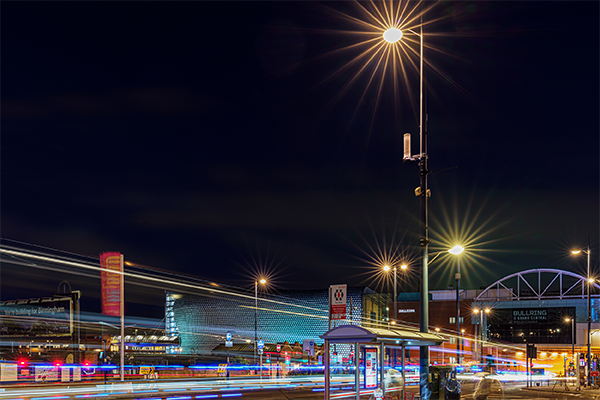Guest blogger Craig Birchenough, Indoor Networks COO at Wireless Infrastructure Group (WIG), explains how they partnered with Birmingham City Council to deploy the UK’s first large-scale 5G neutral host centralized radio access (C-RAN) network that is already transforming mobile connectivity for Birmingham’s businesses and communities across the region.
Opinions and comments provided in this guest post, as with all posts to CommScope Blogs, are that of the author and do not necessarily reflect the views of CommScope.
Working with our partners, WIG has recently completed an award-winning, multi-operator 5G C-RAN infrastructure project in the West Midlands.
The 5G network was commissioned to support the City of Birmingham’s ambitious socio-economic vision for the region, and it is already delivering immediate connectivity benefits to communities and businesses ahead of the 2022 Commonwealth Games.
This is one of Europe’s largest metro deployments, part of a complex and hugely ambitious project that involves the development of more than 200 miles of connected road networks.
Our network was delivered with the support of CommScope and Ericsson as part of the Midlands Future Mobility initiative, the Centre for Connected and Autonomous Vehicles (CAVs) and Innovate UK, as well as partners Birmingham City Council and the West Midlands Combined Authority.
In addition to underpinning the digital transformation of the city and surrounding area with new, high capacity 4G and 5G mobile services, our infrastructure is also a key component of an initiative that aims to demonstrate the potential of the critical technologies supporting connected vehicles and the future of more sustainable forms of transport.
To meet the stringent demands of connected vehicles, this had to be a highly engineered infrastructure. WIG led the design, construction, and operation of the network. We deployed our own fibre backbone across the city, connecting infrastructure assets located at the base of existing street lighting poles, reducing environmental impact, and avoiding unsightly street clutter.
The project benefited from an especially close partnership with the City Council. As we have with other major metro deployments like Aberdeen and London, we formed a steering group comprising representatives from the Council’s IT and Transformation, Legal, Intelligent Transport Systems, Street Lighting, Planning, Roads and Digital Economy departments, along with the MNOs to guide and inform all stages of design and deployment. This helps reduce red tape, identifies challenges before they become problems, and ensures that the concerns and requirements of all stakeholders are fully addressed.
Throughout the deployment, WIG partnered with CommScope Professional Services in a collaboration to connect tens of thousands of streetscape assets to create a scalable and sustainable multi-operator, multi-technology mobile network. It already delivers extremely high throughput, with current service levels in excess of 1 Gb/s and a very low signal-to-noise ratio. Clearly an excellent end user experience via 4G or 5G.
The deployment had recognition at the recent Small Cell Forum Awards 2022. WIG won the award for ‘Excellence in commercial deployment by neutral host’, helping to transform mobile connectivity across the Birmingham region, including contiguous high speed and high capacity 4G and 5G services from Birmingham International Airport through to the city centre.














